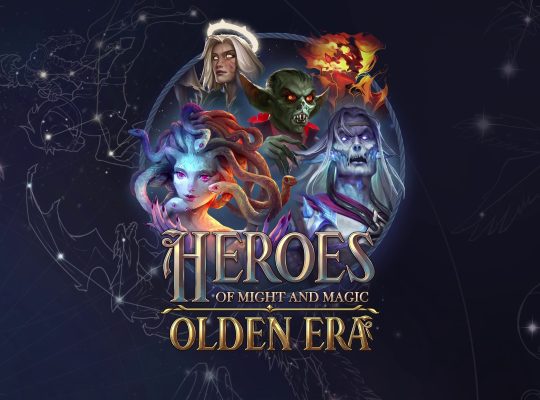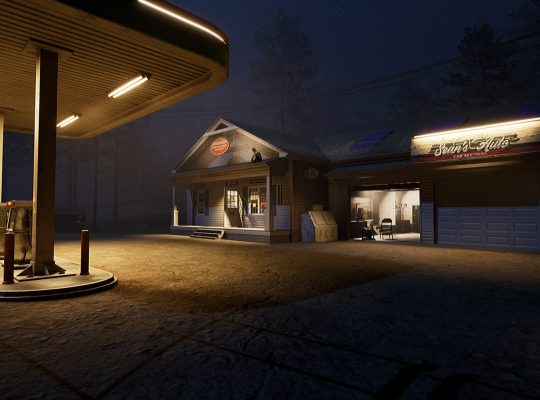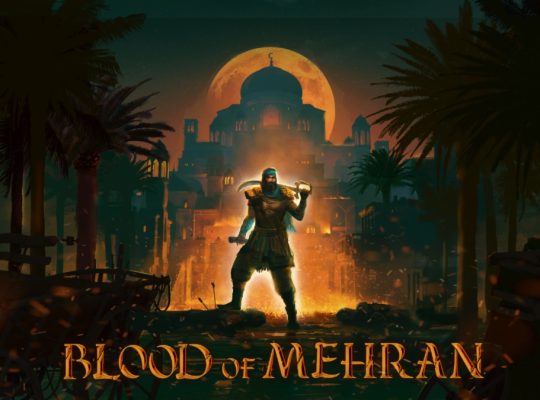- DEVELOPER: Stand Sailor Studio
- PUBLISHER: Thunderful Publishing
- PLATFORMS: PC
- GENRE: Survival / Management
- RELEASE DATE: June 20, 2025
- STARTING PRICE: 24,99€
- REVIEWED VERSION: PC
Having spent about 20 hours in ASKA, I realize I should have played this Viking-themed survival game sooner. It blends standard survival and crafting mechanics with the unique twist of building and managing a tribe. Think of it as a mix of Medieval Dynasty and Valheim, where tribe management and fantasy combat are a big part of the fun.

From Scavenging to Proper Settlement
Survival in Aska starts simple but escalates into a demanding logistical puzzle as your colony grows. You begin by scavenging basic necessities, berries for food and rainwater, with hunger and thirst easy to maintain. Always be sure to prepare for harsh winters by stockpiling resources, or risk freezing to death during blizzards.
Gathering resources feels real and physical; you can see every stick or log carried on your character. Thankfully, chopping trees or breaking rocks raises your skills so you get better and faster later. My one big problem with the start of the game is that it’s too much of a grind to set everything up, as most buildings cost a lot, and it takes time to fully learn how the game works.
You will not have much time to just wander and explore the world freely. You must be very active in managing the settlement, gathering food and resources, and making sure everyone, including you, stays alive. This is a village management game first. So, if you were looking for an alternative to games like Valheim or Bellwright, this might not be the right choice.
The inventory system adds a sense of realism but can be annoying. Small items stack only a little (5-10 units). Medium items, like bark, do not stack and clutter up your character. Large items, like boulders, take up a single slot and stop you from using tools. Overall, the survival part is best when you plan ahead, not when you are constantly in danger. Also worth pointing out is that the non-stop need for resources can feel more punishing than fun if your village isn’t set up well.

Specialization, Morale, and the Complex Logistics of Managing a Viking Tribe
Managing your village involves assigning specific jobs to villagers using buildings like huts or flags. For example, woodcutters gather logs, foragers mark gathering areas, and hunters find meat. Beyond task assignment, you must manage their essential needs like food, water, tools, shelter, and maintain morale. While the system for morale can be confusing, allowing you to change work hours, you may still find villagers idly complaining they “need an axe” until you manually address the tool or job issue.
To succeed, especially in the late game, you must specialize, train, and upgrade villagers into roles like hunters, blacksmiths, farmers, and guards to improve efficiency. Running the village then becomes a complex management task, requiring you to carefully oversee food stockpiles, crafting speed, building repair, and organized defense during attacks like the Blood Moon.
AI is generally capable but can be overly literal; villagers work hard but require exact instructions to perform a task. Although the menu system is messy, mastering it is rewarding: a self-sufficient 20-person town frees you up to focus on exploration or planning new structures. Character traits and effective defenses against invasions are also important for survival.
Also, changing world and seasons keep the late game dynamic. You must prepare for winter, when resources become scarce, by managing stockpiles and ensuring you have enough workers for year-round production and defense. Late-game content also introduces boss fights, the discovery of runestones and legendary gear, and more challenging resource demands, all of which push you to perfect your village setup and villager assignments.

Mastering Combat Skills and Village Defense
Combat in Aska uses many weapons inspired by Nordic designs, like one-handed hammers, axes, and swords. Leveling your combat skills is important. You need to be smart about choosing your fighters and preparing for enemies that get more difficult over time. Enemies sometimes drop weapons that you can reforge into powerful ancient versions. Fighting also includes setting up patrols and defenses, and it does get chaotic the more you play.
Most regular encounters are forgiving and unchallenging, featuring basic foes like skeletons, wolves, and rabbit-like pests that are straightforward to deal with. However, you must be strategic about leveling your combat skills and choosing your fighters to prepare for enemies that become more difficult over time. Enemies sometimes drop weapons that can be reforged into powerful ancient versions.
ASKA uses Nordic mythology to make the world feel ancient, though it’s not the main story. Key parts of the game rely on Jotun Blood, which you get from ritual sites, enemies, or special stones. You use this blood at the Eye of Odin altar to summon new villagers. This blood links to the old stories of giants and gods, with villagers having special traits, like cold resistance. You can also turn into a raven to scout, build runestones for stronger defenses, and prepare altars to gain favor from the gods.
In terms of graphics, ASKA is not hard on your computer and mixes good visuals with smooth performance. It features natural settings with detailed plants and village buildings that look better as you play. However, some assets, like plants and resources can look low quality or confusing when viewed close up. But do keep in mind that the performance can slow down as your village gets bigger due to more NPC activity and complex base designs.

Less Exploration, More Management
In the end, Aska is a promising early access survival game that offers a fresh mix of Viking survival and deep tribe management. Remember that this game is more relaxing and focused on managing your settlement than games like Valheim or Enshrouded, which require constant exploring. If you know what to expect and have a few friends to join you, this game is definitely worth your time.
Pros
- Unique Genre Blend & Niche Appeal: Offers a “unique twist” by combining Viking survival (like Valheim) with deep tribe and village management (like Medieval Dynasty), ideal for players who enjoy detailed logistics and colony growth.
- Complex & Rewarding Tribe Management: Involves assigning jobs, handling food, water, and morale, and mastering a layered menu system, making management both challenging and satisfying.
- Physical & Immersive Resource Gathering: Gathering feels grounded and realistic — the character visually carries every stick or log, and gathering efficiency improves with experience.
- Good Performance & Visuals: Runs smoothly on most systems, mixing detailed natural environments and evolving village aesthetics with stable performance.
Cons
- Slow & Repetitive Early Grind: The early hours are slow and grind-heavy, with expensive building requirements and a steep learning curve.
- Annoying Inventory System: Realistic but frustrating — limited stacking and cumbersome handling of medium and large items clutter inventory and restrict tool use.
- High Management Focus Limits Exploration: Heavy focus on village upkeep leaves little room for free exploration, which may disappoint players seeking a more open-world survival experience.
- Unchallenging Regular Combat: Standard encounters are forgiving and lack excitement, offering minimal tension for players expecting consistent action.
eview copy provided by the publisher
3.6











